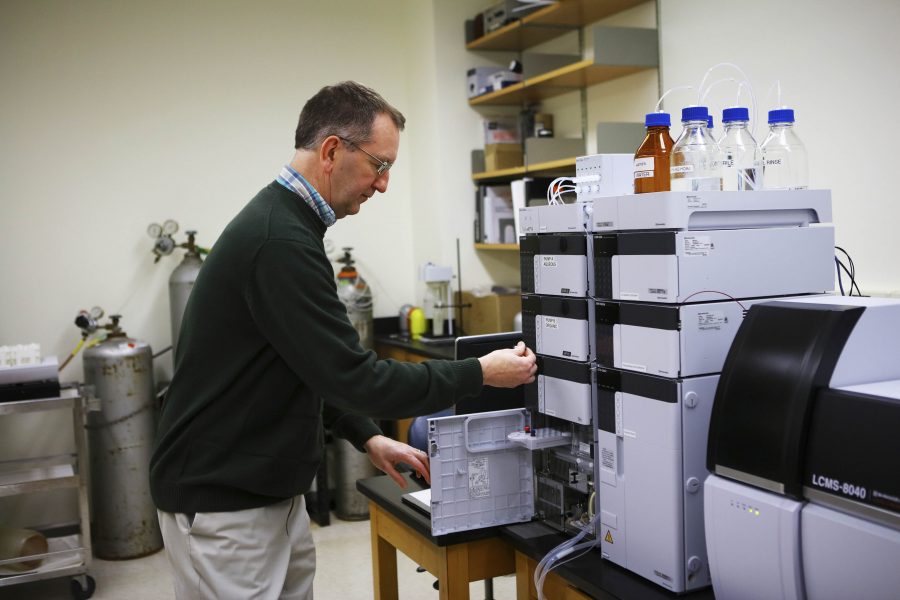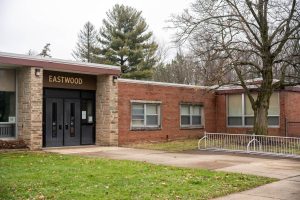College Embraces New Technology, Research
Photo by Rick Yu, Photo editor
Chemistry and Biochemistry Professor Robert Thompson poses with one of the College’s new chromatograph-spectrometers. The equipment replaced 16-year-old machines.
February 17, 2017
The College’s Chemistry and Biochemistry departments have added two new pieces of equipment to allow students and professors to separate compounds down to extremely small sizes to study their makeup.
These large and expensive devices, known as chromatograph-spectrometers, will help the two departments in conducting research. Seeing as the previous models were 16 years old and have been broken since last year, professors and students using the machines were excited to get replacements.
According to Chemistry and Biochemistry Professor Robert Thompson, the improvement between the old and new machines is “like thinking about what your phone was like 15 years ago — a huge difference.” Thompson said that the main improvement is in sensitivity, as the new chromatograph-spectrometers can detect particles 500 times better than the old models, meaning it can identify much smaller substances.
In basic terms, the chromatograph first takes a substance and separates the compounds by polarity so that they can each be categorized and easily recognized. Then, it further separates the compounds by using lasers to blast them apart. Thompson explained that the process is a gradual shrinking in scale from one larger compound.
“A chromatograph takes a mixture and separates all the individual compounds and dilutes those one by one out of the chromatograph, and one by one those compounds get identified and quantified from the master compound,” he said.
The instruments cost $430,000. According to Thompson, the cost was covered primarily by a fund started 30 years ago specifically intended for the purchase of instruments for the Chemistry department, along with contributions from alumni and from the College.
Thompson was additionally able to get a 40 percent discount on the purchase. He explained that normally the department would have tried to get a grant before purchasing such expensive instruments, but the old instrument failed last summer. Given that it is used widely in teaching and research, the department wanted to replace it as soon as possible.
One of the instruments is known as a liquid chromatograph-spectrometer, needed mostly for identifying waterbased substances, while the other is a gas chromatograph-spectrometer, useful for compounds with lower boiling points that evaporate more easily.
Andy Abely, a post-doctoral student working with Chemistry Professor Jason Belitsky, has been using the new gas spectrometer to study certain substances and noticed the improvements.
“Anecdotally, it has about a 100 percent better detection limit, so we can detect things at much lower concentrations,”Abely said.
Thompson has also seen benefits in his study of fruit pesticides. With the old instruments, Thompson had to add additional pesticides to the fruit in order for the machine to work properly. Now he can use the fruits in their original condition.
Scientists are also excited for the replacements because of their versatility. Chemistry Professor Rebecca Whelan, for instance, is using the liquid spectrometer to identify compounds in the secretions birds have on their wings.
These instruments will not only be useful to professors conducting research; according to Professor Thompson, eventually every Chemistry major will use.



















